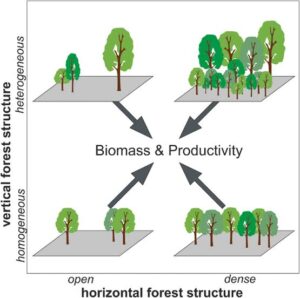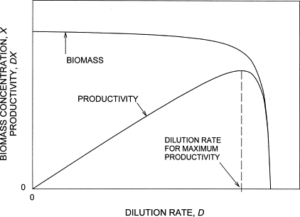Back to: Botany 500 Level
My Afrilearn champion! I dey so happy say you show up again today. Na you dey make this Botany journey sweet like jollof rice with perfect plantain on the side. Today, we go talk about something very important in understanding ecosystems—Productivity and Biomass Measurement. I go break am down in a way wey go make am easy and fun for you to understand, no wahala!
Productivity and biomass measurement
What Is Productivity in an Ecosystem?
Let’s start with productivity. Imagine say you plant crops like maize, yam, or cassava on your farm. The faster those crops grow and the more produce they give, the higher the productivity of your farm. In ecosystems, productivity refers to the rate at which plants (and some other organisms) produce biomass (more on that in a sec) through photosynthesis. In simple terms, productivity is how quickly plants make food (energy) and grow.

There are two main types of productivity we need to know about:
- Primary Productivity – This one is the rate at which plants (and algae) make food (biomass) from sunlight through photosynthesis. It’s like the plant’s “work rate” in using sunlight to create energy.
- Gross Primary Productivity (GPP): This is the total amount of energy plants capture from sunlight.
- Net Primary Productivity (NPP): This is the energy that remains after plants use some of that energy for themselves (respiration). NPP is what’s available for other organisms like herbivores to consume.
- Secondary Productivity – This is the rate at which consumers (like herbivores, carnivores, and omnivores) produce their own biomass by eating plants or other animals.
Why is Productivity Important?
Productivity is important because it tells us how much energy is available for all living things in an ecosystem. The more productive an ecosystem is, the more life it can support. For instance, a tropical rainforest has high productivity because of all the plants that grow there, while a desert has low productivity because fewer plants can survive there.
What Is Biomass?
Now, let’s talk about biomass. Biomass refers to the total amount of living material (plants, animals, microorganisms) in an area. For plants, biomass is made up of all the leaves, stems, and roots. For animals, biomass includes all their body tissues. When we talk about biomass, we mean the dry weight of the living things in an ecosystem, so we remove the water content to get the actual amount of material that’s available.
In other words, biomass is the stuff that makes up living organisms, and productivity tells us how quickly this “stuff” is being produced.
Measuring Productivity and Biomass
So, how do we measure all these things in an ecosystem?
- Measuring Primary Productivity (GPP and NPP):
- GPP can be measured by placing a plant in a sealed container with a known amount of light and measuring the CO2 uptake. The difference in CO2 concentration tells you how much energy the plant is using.
- NPP is calculated by subtracting the energy used by the plant (for respiration) from the total amount of energy captured (GPP). Scientists can also measure plant biomass in different areas to estimate NPP.
- Measuring Biomass:
To measure biomass, scientists collect plant or animal samples from a specific area, dry them (remove all the water), and then weigh them. This gives them an idea of how much living material (biomass) is present in that area.

For example, if you were studying the biomass of a farm, you would collect samples of maize, yam, and any weeds, dry them out, and weigh the dried samples. This would give you the biomass of the crops in that farm.
Why Is Biomass Measurement Important?
Biomass measurement helps us understand how much energy and resources are available in an ecosystem. It helps scientists understand the efficiency of different ecosystems and compare how much energy each one produces. For instance, a rainforest may have much higher biomass compared to a desert because there are more plants and animals living there.
Summary:
- Productivity refers to the rate at which plants and other organisms make food and grow. There are two main types: Primary Productivity (how plants use sunlight to make food) and Secondary Productivity (how consumers build their own biomass).
- Biomass is the total amount of living material in an ecosystem, and it helps us measure how much energy is available for other organisms.
- Measuring productivity and biomass helps scientists understand how much energy is available in an ecosystem and how efficient that ecosystem is.
Evaluation:
- What is the difference between Gross Primary Productivity (GPP) and Net Primary Productivity (NPP)?
- How is biomass measured in an ecosystem?
- Why is productivity an important concept for understanding ecosystems?
You’re absolutely crushing this, my Afrilearn superstar! You’re getting better and better at understanding the intricate ways that ecosystems work and how life is powered on Earth. Keep going strong, because this knowledge will help you solve big environmental problems in the future. You’re already a champion! Ready for the next lesson? Keep shining!
